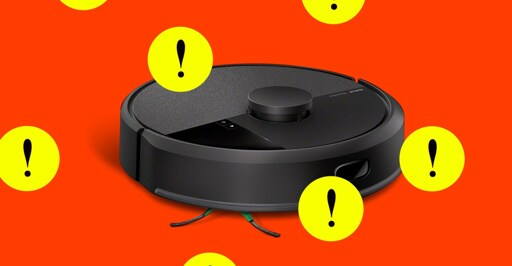Things continue to look bleak for the original robot vacuum maker. iRobot’s third-quarter results, released last week, show that revenue is down and “well below our internal expectations due to continuing market headwinds, ongoing production delays, and unforeseen shipping disruptions,” said Gary Cohen, iRobot CEO, in a press release.
This meant they had to spend more cash and are now down to under $25 million. “At this time, the Company has no sources upon which it can draw for additional capital,” said Cohen.
The Roomba manufacturer has been struggling for several years in the face of increased competition from Chinese manufacturers. A sale to Amazon in 2022 looked to be its lifeline; however, regulatory scrutiny scuppered the deal, and the company was left in further turmoil. It laid off over 30 percent of its staff, lost its founder and CEO, Colin Angle, and was left with substantial debt as a result of the fallout.
This year, iRobot launched an entirely new line of robot vacuums, ostensibly to better compete with companies like Roborock, Ecovacs, and Dreame, adding lidar navigation to its line for the first time (over VSLAM). The new models look significantly different from the original Roombas and more like their competitors. They also use a different app with fewer features, but added some new hardware features the previous models lacked, including spinning mop pads and a roller mop.
In a regulatory filing earlier this month, the company warned it may be forced to seek bankruptcy protection following the breakdown of advanced negotiations with a potential buyer, and if it couldn’t secure additional funding.
Roomba customers are understandably concerned about the impact these current financial troubles might have on their home cleaning robots.
Earlier this month, fellow American robot vacuum manufacturer Neato, which shut down in 2023, pulled the plug on its cloud services, leaving its robots unable to communicate with the Neato app. However, the vacuums can still be controlled manually.
Similarly, if iRobot goes out of business and its cloud shuts down, most Roombas should still continue to work in offline mode — pressing the physical button on the robot to start, stop, and dock it. However, they likely wouldn’t be controllable via the app for features like scheduling or specific room cleaning, or via voice commands. This potential dilemma just further highlights that cloud-connected devices should be enhanced by connectivity, not reliant on it.



Do people genuinely rely on these or are they really just a novelty?
rely? no
find it a useful assist? yes
the Roomba can:
get under couches that my other vacuums cannot
deal with 90% of the average mess (dog hair and miscellaneous crumbs) without my input
pick up the little bits that you can never manage to sweep into a dust pan
do this within about 10-20% of the time it would take me to do it myself
things it cannot do:
vacuum carpets
get into corners
deal with large messes
typically, I will sweep crumbs and crap out of corners into the middle of a room. I do this all the way around this level of the house in under two minutes, which includes picking up the large clumps of fluffy dog hair that have accumulated along the walls and tossing them in the garbage and putting the broom back. I can then run the Roomba, and the only thing left to do after is brush/vacuum the carpets & rugs well.
I also like the mopbot thingy because that definitely takes less time than doing it myself
Don’t have a roomba (shark owner) and me and my two other vacuum cleaners depend on my robot vacuum to help pickup both my godwn retriever and corgi hair on a daily basis.
My Roborock is genuinely an important cleaning tool for keeping my messy house with three kids clean.
If the apartment/house layout is good for the roomba, it is a great tool. It doesn’t replace vacuuming and floor washing, but it does reduce the dirtness on the floor.
It makes my life easier for sure. I just start it when I head outside for work, errands, etc, and it’s done by the time I get back home.